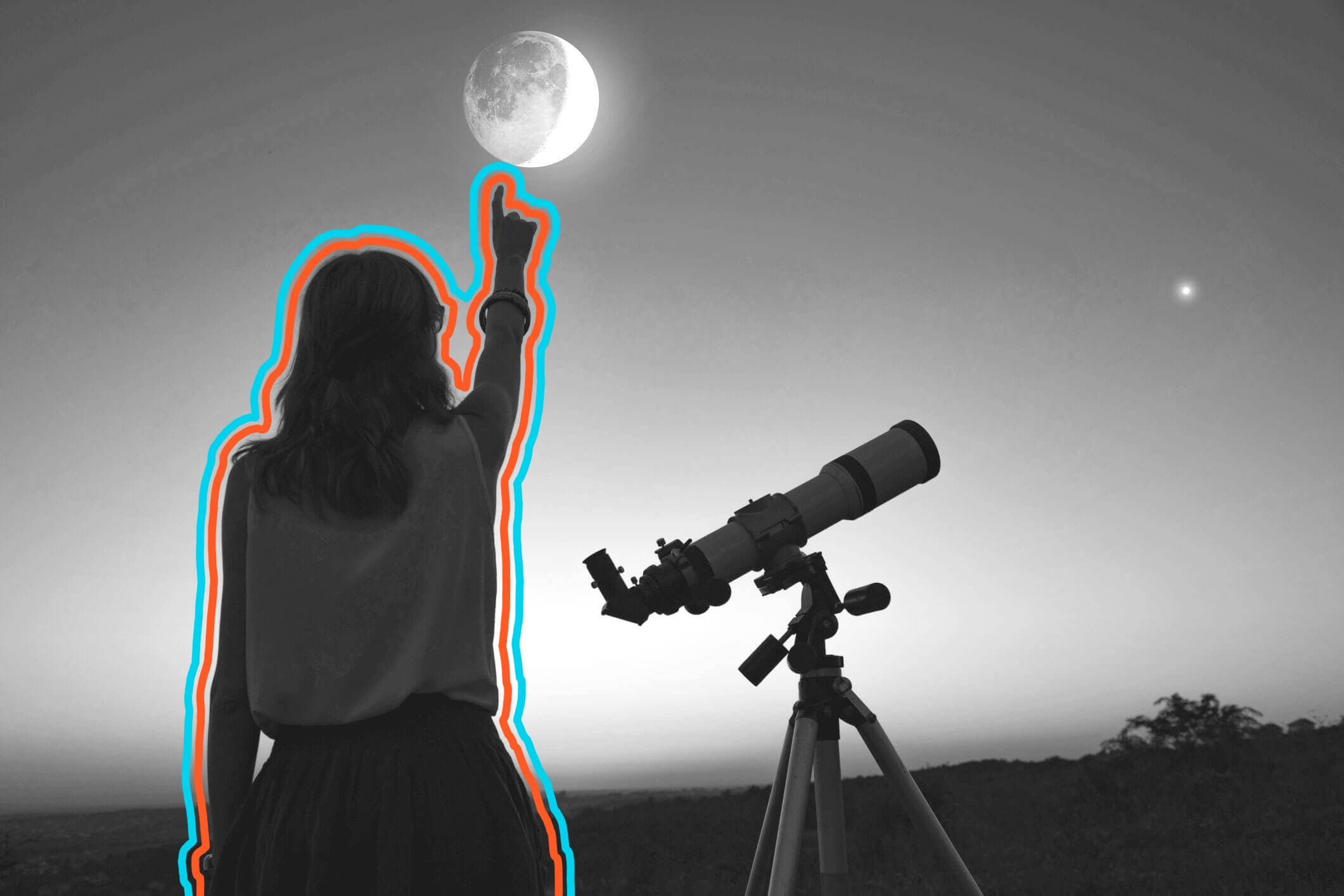
Some cultures see a frog (or a rabbit) on the moon.
Ever since early humans first stared at the night sky, the moon has played a starring role in stories and folklore. Personified by gods and goddesses such as the Greek Selene, Roman Luna, Chinese Chang’e, and Hindu Chandra, the moon takes various shapes depending on who’s doing the looking. Many Western cultures see a man’s face in the moon, with his misshapen eyes, nose, and mouth formed from the dark lunar “seas” — actually vast hardened lava plains — on the moon’s near side. Others see a whole male figure, with stories from Germany and elsewhere telling of a man banished to the moon for chopping wood on the Sabbath.
Some cultures don’t see a man at all, but instead a woman, like the New Zealand Maori legend of Rona, the moon’s maiden. In Angola, a tale tells of a frog in the moon. In a Chinese tale, the goddess Chang’e flees to the moon, where she is turned into a toad; according to the myth, she and her rabbit, Yutu, can be seen on the moon’s surface creating the elixir of immortality with a mortar and pestle. Many of these tales are thousands of years old, but some remain alive and well to this day. In 2019, China landed the world’s first spacecraft and lunar rover on the far side of the moon; their names were Chang’e-4 and Yutu-2.
In sub-Saharan Africa there lives an abundant amphibian called the African clawed frog, or Xenopus laevis. It looks like other frogs, but the females have a special ability — when injected with certain hormones, they begin laying eggs within 12 hours. This strange power was discovered by British zoologist Lancelot Hogben in 1930. Once he witnessed the egg-laying results while experimenting with ox hormones, Hogben wondered if the frogs would lay eggs if injected with urine containing similar hormones from pregnant women. The results were surprisingly reliable, and between the 1940s and 1960s, tens of thousands of Xenopus frogs were injected with urine sent by doctors to special frog labs. The “Hogben test” made pregnancy testing much faster and more widely available than it had been previously; the tests didn’t kill the frogs, so labs could keep colonies on hand and reuse them. In the 1970s, Xenopus laevis was replaced by at-home tests that directly detected the hormone chorionic gonadotropin (hCG), a telltale sign of pregnancy and the same hormone that caused the frogs to ovulate. But the African clawed frog’s career in the sciences wasn’t over, for better or for worse. With large populations of the animals already available for research, they ended up contributing in other fields: The first animal gene ever cloned belonged to a Xenopus, and four even took a ride on the space shuttle Endeavour in 1992, which tested the frogs’ ability to reproduce in space. (They did just fine.)

